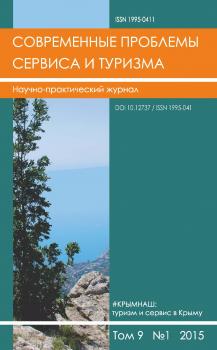Last ten years there were lots of things which appeared in wide museum activity connected with its visitors. Museums, not leaving the traditional excursion routes, tried to use the most different ways to improve their programs with experience of teachers, psychologists, actors and animators. How can we manage work in an average museum today in changing economic circumstances? How can we create and offer a museum product which is so necessary and demanding? What do our visitors expect to have in a museum area? According to analysis the last programs made by the Mouranovo museum creative group of staff (they tried to form a vivid atmosphere in museum exposition to improve the number of visitors) it is obvious what we have to do for the new museum position. The article is dedicated to the way how to translate the main idea of the museum experience and show the museum´s treasures. Museum staff has to find like-minded partners who can be involved in museum ethic as well as in cultural and historical things of the place, to put in everyday museum life some new and interesting programs. We have already have some museum programs and festivals very popular for our visitors as «the Haymaking in Mouranovo», «the Maslinica in Mouranovo», «the Jam Day», «the Winter festivals», «the Saturday Croquet», theatrical excursion «the country estate kitchen» etc. Theatrical forms for representing the museum subjects make perception lighter and put it in emotional way. The result of the work is the last «Maslenica in Mouranovo» (2015). 5500 people visited and took part in the fest during twodays. So at the moment museum management and development is one of the most important tasks for we must receive lots of visitors in a proper way and give them a full-fledged rest.
museum, cultural tool, estate environment, game, source of culture, dialogue with a bygone era, comfortable environment, leisure.
Традиционно музей (и это зафиксировано в многочисленных справочниках, словарях и энциклопедиях) занимается собиранием, хранением и изучением памятников материальной культуры, а также их популяризацией. Являясь хранилищами культурно-исторических знаний, притягивая к себе как специалистов, так и широкие массы посетителей из всех социальных слоев, музеи сегодня становятся, вместе с тем, одной из интереснейших площадок общения с прошлым. Чувство ностальгии по утраченному, минувшему, полузабытому знакомо в той или иной степени всем без исключения. Потребность обращения к ушедшей эпохе заставляет находить способы в понятных и простых формах открывать посетителям прекрасный и разнообразный усадебный мир. Это и природный ландшафт с живописной перспективой, не без боя сохранённый в наши дни, и усадебный парк с его жилыми и хозяйственными постройками и, конечно, сам усадебный дом, хранящий в своих стенах такие живые воспоминания, предметы дворянского быта, многие из которых являются настоящими произведениями искусства. Всё перечисленное даёт право утверждать, что музейные усадебные комплексы могут стать специфическим инструментом освоения высокой дворянской культуры.
Обратившись к опыту исследователей в области изучения игровой потребности «человека разумного», ссылаясь на труды Бойтендака и Адлера-Штерна, которые смотрели на феномен «игры» как
1. Boratynskaia K. N. Moi vospominaniia [My memories]. M.: Zebra E, 2009.
2. Gesse G. Siddkhartkha [Siddhartha]. M.: AST, 2009.
3. Kokorev I. T. Ocherki Moskvy sorokovykh godov [Sketches of Moscow of the forties]. M.; L, 1932.
4. Levshin V. A. Slovar´ povarennyi, prispeshnichii, kanditerskii i distilliatorskii, soderzhashchii po azbuchnomu po-riadku podrobnoe i vernoe nastavlenie к prigotovleniiu vsiakogo roda kushan´ia iz frantsuzskoi, nemetskoi, is-panskoi i angliiskoi povarni; pirozhnogo, desertov, varenii, salatov, vod, essentsii, ratafii, likerov; dvoeniiu vodok, i pr.; a takzhe к ucherezhdeniiu stola s planami, podache, uslugi i pr. I prisovokupleniem v osobykh paragrafakh polnoi meshchanskoi povarni i novoi, ravnym obrazom povaren avstriiskoi, berlinskoi, bogemskoi, saksonskoi i russkoi [Dictionary of cookery, prispeshnichy, confectioner and distillyatorsky containing alphabetical order of the detailed and correct instruction to cook all kinds of dishes from French, German, Spanish and English the hut; cake, desserts, jams, salads, water, essences, ratafii, liqueurs; double vision vodka, etc .; as well as the institution of the table with plans, supply, services and so forth. And prisovokupleniem in special sections and complete the hut of a new middle-class, likewise Austrian chef, Berlin, Bohemian, Saxon and Russian]. M.: Uni-versitetskaia tipografiia Khr. Ridigera i Khr. Klaudiia, 1795-1797.
5. Pigarev N. V. Domashnie deti [Home children] // Moskva rodoslovnaia. M., 1989. p. 159.
6. Kheizinga I. Homo Ludens; Stat´i po istorii kul´tury [Homo Ludens; Articles on the history of culture]. M.: Prog-ress-Traditsiia, 1997.
7. Krivosheyeva T. M., Sultaeva N. L, Druchevskaya L. E. Cooking schools as a tourist attractor // World Applied Sciences Journal. 2014. T. 30. № 30. p. 98-100.





